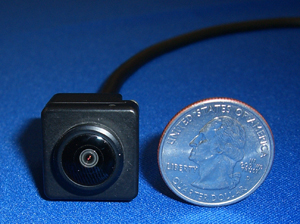
PLYMOUTH TOWNSHIP, MI – Using innovation as a compass to chart its course, Hella KGaA Hueck & Co. says it has weathered the industry downturn and sees bright prospects for supplying new technology for future vehicles.
Over the course of 18 months of restructuring, the private company based in Lippstadt, Germany, closed a lighting plant in York, SC, eliminating 380 jobs. The business was transferred to Mexico. Global employment has fallen from 24,736 in 2008 to 23,500 currently.
Hella projects worldwide sales of $4.5 billion (€3.6 billion) for the current fiscal year and earnings before interest and taxes of more than $125 million (€100 million), says Martin Fischer, president of Hella’s North American operations, based here.
The profit figure represents an increase from $62 million (€49 million) last year and a decrease from $293 million (€233 million) in 2008, Fischer says.
In an earlier meeting with U.S. journalists, Fischer says the company is done with restructuring, and that new financing has put the company on stable footing.
“The world has changed, and Hella has changed with it,” he says. “We have bottomed out, and we are slightly optimistic year-over-year to climb up. In global comparison, we can say the U.S. and the North American market will be one of the growth areas.”
Hella’s key product segments are lighting and electronics, and both promise significant growth for the supplier.
In electronics, Hella announces a new joint venture with Samsung Electro-Mechanics Co. Ltd., a division of Korea’s Samsung Group, to develop lightweight rearview cameras for cars and trucks, beginning in 2011.

Known as RVC3, the new camera module is about the size of a quarter – 25% smaller than the camera Hella currently produces – and weighs less than half an ounce, making it much easier to package.
Hella expects the market for rearview camera systems to skyrocket as the federal Kids and Cars Safety Act rolls out in the coming years. The device, connecting to a display screen on the dashboard, provides a visual of everything behind a vehicle.
Some 300 people, mostly children, die annually in backup accidents, says Mark Brainard, vice president-program management at Hella Electronics.
“We think part of the legislation will highly recommend use of rearview cameras to avert those tragedies,” Brainard says.
The deal with Samsung involves no exchange of equity. Fischer describes the relationship as a cooperative venture between the two.

Samsung provides the core technology, such as the lens and electronics, while Hella will coordinate packaging and integration to meet customer requirements.
Hella has supplied its current-generation rearview cameras for Chrysler minivans since 2005, but Brainard describes the Samsung technology as “far better” and less expensive, delivering comparable profitability.
“The only reason we are getting out of our own vertically integrated business is simply because we as an auto supplier feel we won’t keep up with the market,” he says. “Samsung are masters of miniaturization, masters of scale. And they’ve got a tremendously deep innovation pipeline.”
As for sticker prices, Brainard predicts rearview-camera systems will be cut in half by 2014.
Brainard also forecasts a 50% annual growth rate for radar systems, another Hella product line that enables emerging technologies such as lane-change assist, blind-spot detection and cross-traffic alert.
In the lighting market, Hella is supplying one of the first LED headlamps for the all-new Audi A8, which is arriving now in Europe and at the end of the year in North America.
The highly stylized headlamps have generated significant buzz for the new A8. Initially projected to have a relatively low take rate, Hella now expects more than half of A8 buyers to opt for the LED package.
Each headlamp has nearly 100 LEDs for turn signals, daytime running lamps and low and high beams, says Steffen Pietzonka, Hella’s vice president-marketing for lighting.
The headlamp even has a “motorway” setting, which allows for better illumination on highways. Another nice feature uses GPS to automatically switch the direction of the headlamps when a vehicle in Europe crosses the border into the U.K., where they drive on the left side of the road.
LED headlamps are more expensive, but they reduce glare, last much longer and require 40% less energy than a conventional halogen bulb.
By 2025, about 60% of new vehicles are expected to have LED headlamps, Pietzonka says.
Hella also is marketing a new electronic wastegate actuator for turbochargers.
Pneumatic valves commonly are used today to control the exhaust flow to the turbocharger. But Brainard says pneumatic approaches have inherent performance drawbacks that hurt fuel efficiency and performance.
Hella’s actuator controls a pressure valve connected to the exhaust outlet to regulate rotation of the turbine wheel. “It’s a highly precise way to control the RPMs,” Brainard says.
Hella is collaborating on the technology with Tier 1 turbocharger suppliers such as BorgWarner Inc. and Honeywell International Inc. Brainard expects the device to be in production for North American vehicles in about three years.
Within five years, he says up to 35% of new vehicles are expected to incorporate direct injection and turbocharging.


